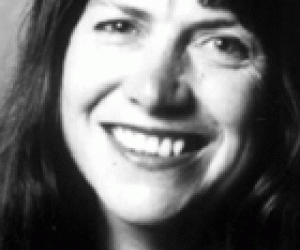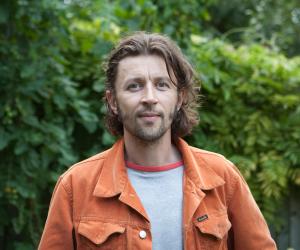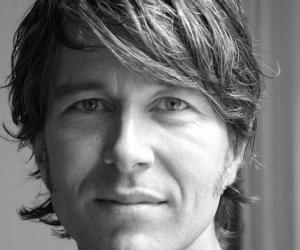First Published in
Pearson describes himself modestly as a garden maker, but his portfolio suggests a much bigger role than that, his projects invariably melding private plots, often of substantial size, with the surrounding natural landscape. He is also a broadcaster and author of note, inspiring many people through columns in The London Sunday Times, his TV programmes and books, to get in touch with naturalistic garden design.
His traits are his attention to detail, from planting to furniture, and his ability to create an environment that looks as if it was always there. Appropriate planting is as important as vistas and features such as ponds. All should be harmonious. "Gardens are too often put on to land rather than into land," he maintains. Water "should have as much space as possible to shine and sing", he says, describing a path as "a line of desire".
He talks frequently of "reduced environments", meaning spaces that are simple and respectful of their surroundings. This shows in his choice of only three or four materials for features in any garden "to reduce conflict". Similarly, he chooses not to light plants at night, preferring them to speak for themselves, though he does light hard landscapes.
Pearson came to garden design early - with a painter father and "maker" mother it is not surprising that both he and his brother Luke, a furniture designer, should express their creativity. At the age of five, he recalls being interested in plants, but the breakthrough into design came when he was ten and his family moved to a house with an acre of garden that had been owned by an old lady. "There was undergrowth everywhere," he says. "Creepers were growing round the furniture and there was a tree coming out of the chimney." He was soon supplementing his pocket money with the sale of plants he'd grown, and created his first garden plan - for the family home - at the age of 13.
By 17 he had decided against going to design school, choosing instead to study at the UK's renowned Wisley Gardens and the Royal Horticultural Gardens at Kew, and received his first private commission. This was for fashion designer Frances Mossman, who along with Sir Terence Conran's sister Priscilla Carluccio, ranks among the patrons who guided his career.
Though gardens take years rather than months to complete, Pearson is prolific. His work in the UK extends from the prestigious job of creating the gardens relating to the Althorp Visitor Centre in Northamptonshire - an exhibition designed by Din Associates to celebrate the life of Diana, Princess of Wales, at her family home and final resting place - to the landscaping around London's Millennium Dome and a private town garden at an award winning house, The Lawns, created by architect Nick Eldridge and Piers Smerin for designers John and Frances Sorrell. There is North Barn for a theatre designer and the 4-acre Home Farm in the Midlands for Mossman, where the planting is, typically for Pearson, inspired by nature, and Broughton Hall in Yorkshire, converted by its entrepreneurial owner into workspaces, where Pearson has provided the "grounding and seating" for a building by British architect Michael Hopkins.
Outside the UK, one of his biggest current jobs is an urban landscaping project in Tokyo's Roppongi Hills district in Japan. Here he is creating 14 roof terraces to give the head of the development company Mori Building Corporation a good view from his penthouse in a residential building designed by Conran & Partners, the London-based consultancy led by UK designer Sir Terence Conran, with whom Pearson wrote the seminal book Essential Garden Design.
"One of the wonderful things about gardens," says Pearson, "is that they allow you to tune into your sensual side. [The experience] is four-dimensional, taking in time, space and the seasons." In the case of Broughton Hall tight budgets extended the project time, meaning Pearson had to work slowly. "Working slowly helps you get to know the space, the client and the building," he says. Meanwhile, at Roppongi Hills, the sensual experience is about the fusion of Japanese and Western cultures.
Pearson's work exudes a "sense of place", which he maintains is key to landscape design. The "manicured" landscapes of England, for example, are "absolutely about the place", he says, the traditional dry stone walls using materials taken from it. "I always try to work with raw materials that are there," he says. "It grounds you in the place." Hence the simple log-like benches at Althorp are inspired by the fallen oak trees on the surrounding parkland. "The idea of working in a landscape is fascinating, using local materials like flint and limestone and people who know how to work them," he says, singling out the Japanese as being "brilliant at capturing a sense of place".
"When you are looking at landscape it is important to look at the wide angle and the micro," he says. "What you have at your feet should be as exciting as the bigger view." This approach shows through his gardens, fuelled through his travels first through scholarships to the Valley of the Flowers at Uttar Pradesh in Northern India, and to Jerusalem's Botanical Gardens, and more recently as a broadcaster and designer.
"Wherever I am in the world I go into the natural environment," he adds. And so his designs vary. His schemes in rural England may be more sculptural, with subtle planting of local species to create vistas and routes through from house to the natural landscape, while his Roppongi Hills create complementary views when seen from above. And while he had little time on his trip to this year's Design Indaba to enjoy the landscape around Cape Town, he describes what he saw as "so different and so rich", and says it was "tantalising being there only for four days".
Pearson loves sensitive planting, but is equally inspired by form and design. He cites Canadian/Japanese sculptor Isamu Naguchi as one of his favourite sculptors - "his work is about regularity and irregularity". Then there is Richard Serra, a sculptor "not afraid of putting large things into small places", who inspired the huge hedges at Broughton Hall.
Pearson's latest project , the Millennium Forest, a 200 hectare ecological park commissioned by a Japanese newspaper magnate at Okido in north Japan is, perhaps, his ideal job. Working with eccentric Japanese landscape designer Fumiaki Takano, he is looking to reintroduce natural woodland to the site. "The majority will be native wilderness, and we are enabling people to access it, leading them through to see what's there already," says Pearson.
But the brief extends way beyond that initial creation. It's to make the land "sustainable for 1000 years". It's a hard call, but Pearson's answer is to create a landscape people will be so passionate about they will pass that excitement on through the generations. "It's about allowing people to be in touch with nature again," he says. What better summary of his work to date.


















